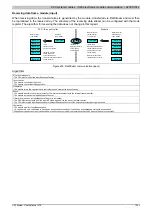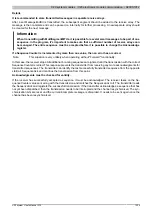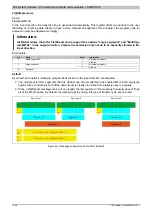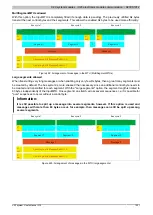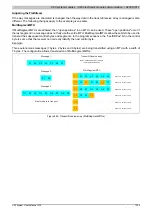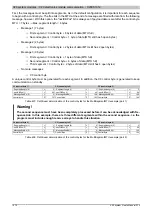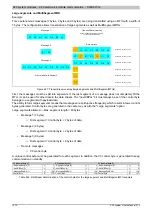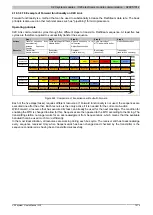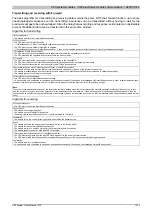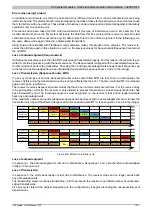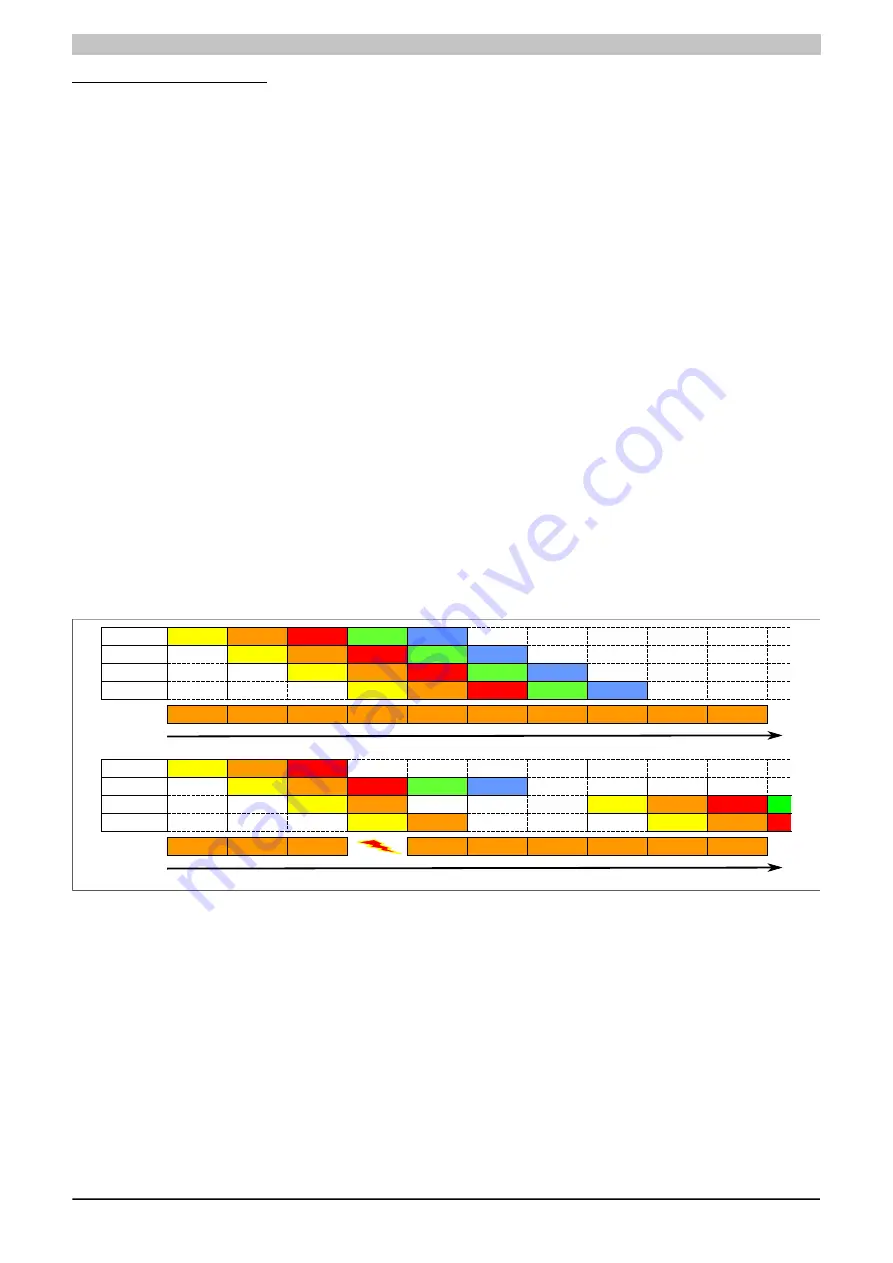
X20 system modules • X20 electronics module communication • X20CS1012
X20 system User's Manual 3.10
1517
Errors when using Forward
In industrial environments, it is often the case that many different devices from various manufacturers are being
used side by side. The electrical and/or electromagnetic properties of these technical devices can sometimes cause
them to interfere with one another. These kinds of situations can be reproduced and protected against in laboratory
conditions only to a certain point.
Precautions have been taken for X2X Link transmissions if this type of interference occurs. For example, if an
invalid checksum occurs, the I/O system will ignore the data from this bus cycle and the receiver receives the last
valid data once more. With conventional (cyclic) data points, this error can often be ignored. In the following cycle,
the same data point is again retrieved, adjusted and transmitted.
Using Forward functionality with FlatStream communication makes this situation more complex. The receiver re-
ceives the old data again in this situation as well, i.e. the previous values for SequenceAck/SequenceCounter and
the old MTU.
Loss of acknowledgment (SequenceAck)
If a SequenceAck value is lost, then the MTU was already transmitted properly. For this reason, the receiver is per-
mitted to continue processing with the next sequence. The SequenceAck is aligned with the associated Sequence-
Counter and sent back to the transmitter. Checking the incoming acknowledgments shows that all sequences up
to the last one acknowledged have been transmitted successfully (see sequences 1 and 2 in the image).
Loss of transmission (SequenceCounter, MTU)
If a bus cycle drops out and the SequenceCounter value and/or filled MTU are lost, then no data reaches the
receiver. At this point, the transmission routine is not yet affected by the error. The time-controlled MTU is released
again and can be rewritten to.
The receiver receives SequenceCounter values that have been incremented several times. For the receive array
to be put together correctly, the receiver is only allowed to process transmissions whose SequenceCounter has
been increased by one. The incoming sequences must be ignored, i.e. the receiver stops and no longer transmits
back any acknowledgments.
If the maximum number of unacknowledged sequences has been sent and no acknowledgments are returned, the
transmitter must repeat the affected SequenceCounter and associated MTUs (see sequence 3 and 4 in the image).
Sequence 1
Sequence 2
Sequence 3
Step I
Step II
Step III
Step IV
Step V
Bus cycle 1
Bus cycle 2
Bus cycle 3
Bus cycle 4
Bus cycle 5
Bus cycle 6
Bus cycle 7
Bus cycle 8
Bus cycle 9
Bus cycle 10
Step I
Step II
Step III
Step IV
Step V
Time
Bus cycle 1
Bus cycle 2
Bus cycle 3
EMC
Bus cycle 5
Bus cycle 6
Bus cycle 7
Bus cycle 8
Bus cycle 9
Bus cycle 10
Time
Sequence 1
Sequence 2
Sequence 3
Step I
Step II
Step III
Step I
Step II
Step III
Step IV
Step V
Step I
Step II
Step I
Step II
Step III
Step IV
Step V
Sequence 4
Step I
Step II
Step III
Step IV
Step V
Step I
Step II
Step I
Step II
Step III
Step I
Step II
Sequence 4
Figure 470: Effect of a lost bus cycle
Loss of acknowledgment
In sequence 1, the acknowledgment is lost due to disturbance. Sequences 1 and 2 are therefore acknowledged
in Step V of sequence 2.
Loss of transmission
In sequence 3, the entire transmission is lost due to disturbance. The receiver stops and no longer sends back
any acknowledgments.
The transmitting station continues transmitting until it has issued the maximum permitted number of unacknowl-
edged transmissions.
Five bus cycles later at the earliest (depending on the configuration), it begins resending the unsuccessfully sent
transmissions.
Summary of Contents for X20 System
Page 2: ......

